






























Spring! Depending on where you are in Canada, this could mean a change to some warmer temperatures or waiting just a little longer for that change to happen Similarly, we look forward to changes and achievements in our development, careers and lives. This issue of PEMAC Now shares a sampling of the great changes which are being made to better industry and workplaces.

Being that this is my first message as PEMAC’s President, I would like to recognize the leadership of J P Pascoli for his three year term as President as well as all current and past board members for their leadership. I am looking forward to continuing to serve PEMAC’s members and find myself extremely fortunate and honoured to be part of such a talented community of professionals. The organisation has great potential and there are amazing opportunities on the horizon.
I can’t ignore that inflation has and continues to have an impact on industry and many organisations are faced with evaluating their investments and spending for cost control For those in our line of work we understand that our approach needs to provide decision makers with an understanding of the current and future impacts of the decisions being made today. A strong asset management approach will help organisations navigate through this time with clarity and focus.
Within Canada and internationally, our members have been engaged in a myriad of events and initiatives aimed at advancing our shared goals through educational seminars, conferences, networking gatherings, and international collaboration By connecting with fellow professionals and sharing knowledge and experiences, we strengthen the fabric of our community and drive positive change.
The Maintrain 2024 call for abstracts is still open but the deadline is quickly approaching. I encourage you to share your story, project, and knowledge If you haven’t presented before, this is a great opportunity for growth and development, or to get outside of your comfort zone
Nominations are also open for PEMAC awards and this issue of PEMAC Now showcases the 2023 Asset Management Team of the Year Award winners and their journey in asset management.
Your passion, expertise, and enthusiasm are a driving force behind our community and industry As we journey forward together through change and achievements, let us continue to connect, learn, and contribute
Wishing you all a wonderful spring season.


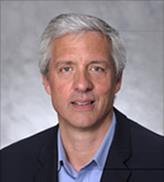


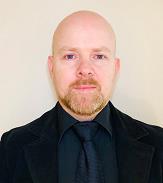








Maintenance Management
Professional
Alexandre Colas
Ali Gamil
Archie MacDonald
Beathune L. Morgan
Benoit Crosset
Brian Decker
Bryan Martin
Che Morrissey
Chris Melendy
Colin Gledhill
Dale Bouvier
Dale Janzen
Danielle Merrifield
Dany Morisset
Dominic Deslauriers
Durc Wurtak
Étienne Bérard
Farouk Hamdani
Fayssal Elkadiri
Florin Jurca
Galloway Kristofer
Giuliana Tatonetti
Hasan Moradi
James Larson
James Leslie
Jarrett Burns
Jeffrey Fontaine
Joel Dauphinais
Jordon Robertson
Joseph Peterson
Justin Cansino
Justin Ellis
Kellen McRoberts
Kofi Arhin
Kyle Bennett
Leesa Schultes
Mark Bachman
Marlin Cannam
Michael Apreku
Muhammad Qasim
Naoufel Adennoun
Nolan Ulliac
Noureddine Bentaleb
Olufola Olumekun
Pascal Beaulieu
Phil Harper
Pier-Luc Bouchard
Ralf Tyolumun Daniel
Randy Mockerman
Rhett Nelson
Richard Mercredi
Rodney Morrison
Roy William Thompson
Ryan Patterson
Sachin Sehgal
Saoussen Ben Ahmed
Serge Vaillancourt
Shawn Snow
Stephen Kerr
Steven Glover
Sylvain Bouvette
Thomas Dufton
Tony Tomkiewych
Trevor Fahselt
Troy Allaby
Tyler A Young
Yacine Rabia
Certified Asset
Management Professional
Adam Rumpel
Aiysha Syed
Amy Bilodeau
Angela Stockman
Angela Victoria
Bouwman
Anna McCarthy
Aubrey GuevarraJongsma
Aurpa Nath
Bassel Agroam
Bernardo Pasco
Carter Hunks
Charity Post
Charlie Brady
Christian Kaiser
Christopher Ziccarelli
Dare Adeyemi
Daryl Schwarz
Dave McCarthy
Dave Salter
Dustin Haeusler
Foued Dridi
Halina Cieszynska
James Hager
James Reitlo
The following professionals have receiving their PEMAC recognition between November 2, 2023 to April 1, 2024
Jaret Siermacheski
Jason Noble
Jeff Liu
Joseph Chartrand
Joshua VanAndel
Justyna Krzysiak
Ken Schuyler
Kewei Liu
Lana Dodds
Larry Chandler
Leslie Taylor
Luis Saez
Luke Richer
Mai Abdou
Marysabel Gonzalez
Mayurish Thirunavukkarasu
Melodie M. Reaume
Michael Knox
Miranda Fowler
Nicholas Bazin
Olumuyiwa Ogunlaja
Oreva Andrew Oboghor
Philip Simm
Rachel Hoffman
Ron Armstrong
Ryan Slade
Salvatore Marra-MacInnes
Samantha Paquette
Sameh Awad
Shelley Watt
Tamba Lamin
Trish Kernen
Wayne Weidner
William Williams
Yvonne Prusak
Certified Practitioner in Asset Management
Mohammed Eltayb
Maintenance Work
Management Certificate
Adam Till
Alexander Dally
Allan Foster
Alvin Kiers
Amy Yates
Andrew Callaghan
Andrew Muir
Antonio Meneses
Azie Seif
Beathune L. Morgan
Bob Anderson
Brad Burt
Bryan Armstrong
Bryan Fowler
Chad Arghittu
Chad Stewart
Charles Houston
Chris Marshall
Cindy Herron
Clayton Armstrong
Corey Morrison
Cosmin Muresan
Craig Ochitwa
Curtis Boucher
Dan Medland
David Hallihan
Deepak Joshi
Devin Hinz
Dustin Staples
Eric Revering
Fares AlDrras
Garth Hewitt
Gordon Moore
Jacob Lahdo
Jamie Mansfield
Jason Roden
Jeffrey Fontaine
Jesse Miller
Jessie Watkins
Jo Cummins
Joe Allain
John Didychuk
John McCardie
Jose Makalintal
Jose Trujillo
Kevin Cummins
Kevin Smith
Kimberly Leatherdale
Kyle Moniuk
Kyle Stoneman
Mahendra Lad
Mahirajsinh Chauhan
Mark Hamilton
Maulin Patel
Michael Apollonio
Michael Hanigan
Michael Roy
Mike Di Tomasso
Nelson Klapak
Nolan Siemens
Oluwole Aderibigbe
Parth Pathak
Paul Plunz
Ragulan Rajanayagam
Ralf Tyolumun Daniel
Ray Lafleur
Reuben Voth
Rhonda Buchberger
Richard Sonke
Rick Bullmann
Robert DesChamp
Robert Miller
Ron Roach
Roy William Thompson
Ryan Mahon
Sean Clarke
Shane Mcmullan
Shane Scott
Shawn Klassen
Suvra Saha
Tanya Pompetzki
Treanne Allardyce
Trenton Heckburn
Walter Blackwood
Maintenance Strategy
Development Certificate
Ahmed Morsy
Ali Gamil
Amanda Bonomo
Antonio Meneses
Beathune L. Morgan
Boris Morales
Brad Burt
Bryan Armstrong
David Vella
Dustin Staples
Enrico Francisco
Eric Revering
Eyitayo Fajinmi
Fred Bursey
Greg McPhee
Gregory Palmer
Jeffrey Fontaine
Jennifer Jackman
Jessie Watkins
Joel Dauphinais
Kellen Roy
Mark Wilcox
Matthew George
Michael Apollonio
Michael Roy
Mike Johnson
Nelson Klapak
Oleg Komkov
Olufola Olumekun
Olusegun Ige
Oreva Oboghor
Ovidiu Iovu
Pratik Patel
Ragulan Rajanayagam
Ralf Tyolumun Daniel
Ron Roach
Roy William Thompson
Shawn McIntyre
Tony Thomas
Wallace Boehme
The following professionals have receiving their PEMAC recognition between November 2, 2023 to April 1, 2024








part in a panel entitled The Future of Maintenance Management
Top: Richard Stamper, Business Development Associate and Roger Davies, MMP Instructor, joined PEMAC Corporate Member, IPEX, at their Maintenance Summit in Oakville.The Nova Scotia PEMAC Chapter's Reliability Technology Night, held on a notably dark and stormy evening, proved to be a beacon for maintenance, reliability, and asset management professionals. Despite the weather, the event saw a robust attendance of 26 individuals eager to delve into the world of predictive technologies. The evening was structured around three enlightening presentations focusing on Ultrasound, Oil Analysis, and Electrical Testing, each aiming to highlight how these technologies can detect potential failures at the earliest stages.
Gilles Lanthier of SDT Ultrasound Solutions journeyed from Quebec to demonstrate the versatility of ultrasound technology beyond leak detection, covering its applications in mechanical tightness, electrical issues, and lubrication. Mark Shierman from Fluid Life in Ontario shared his insights, concentrating on the crucial aspect of "Interpretation & Response" within oil analysis.
His talk emphasized the importance of integrating results with operations, maintenance, and other predictive technologies to craft a comprehensive response strategy Wes Albert, a local authority,
explored the nuances between Motor Current Evaluation (MCE) and Motor Current Analysis (MCA), distinguishing between offline and online applications and their respective benefits.
The event wasn't just a learning opportunity; it also served as a networking platform Attendees, ranging from first-timers to regulars and representing various sectors, had the chance to connect and share insights and experiences. The evening was further enhanced by the sponsorship of Wajax, which provided an array of delicious food trays and drinks, with homemade chocolate cookies courtesy of Martha Myers Consulting Services, maintaining a sweet tradition of the Nova Scotia PEMAC Chapter events


The gathering concluded on a forward-looking note, with attendees being encouraged to contribute to and participate in MainTrain 2024, set to take place in Saint John, NB This event underscored the Nova Scotia PEMAC Chapter's commitment to advancing the field of asset management and reliability, fostering a community of informed and connected professionals.











Alberta
President Dennis Heinzlmeir alberta@pemac.org
Fort McMurray fortmcmurray@pemac.org
GTA
President Arun Gowtham gta@pemac.org
Metro Vancouver bc@pemac.org
Learn
Nova Scotia
President Martha Myers nova-scotia@pemac.org
Ottawa ottawa@pemac.org
Quebec
President Charles Turgeon quebec@pemac.org
Saskatoon saskatoon@pemac.org
Winnipeg
President Neil Abercrombie winnipeg@pemac.org



In the world of asset intensive industries, how we manage our assets through their lifecycle is crucial for an organization’s success.
In its simplest form, it means an organization must make the best decisions it can about its assets, based on a clear understanding of its long-term objectives and purpose. Asset management is the discipline that seeks to achieve this.
Three years ago, Agnico Eagle Mines Limited – a senior Canadian gold mining company with operations in Canada, Finland, Australia, and Mexico –embarked on a journey to optimize the management of its assets, with a goal to achieve peak performance, long-term resilience, and reliability
Agnico Eagle operates eleven (11) mines, employing over 16,000 people in the worlds most prolific gold mining regions. It produces gold and other metals including silver, zinc, and copper. Its mining operations include open-pit, underground mines, as well as processing facilities that extract and refine precious metals from the ore.
Agnico Eagle is a partner of choice, recognized globally for its responsible mining practices, including safety, environmental stewardship, and social responsibility.
It is said that the journey is more important than the destination. To fully digest this concept, we first needed to plot our course of action with the newly created asset management team and limited resources
Traditionally asset decisions were bound to the life cycle of the asset from its initial creation, through its working life to disposal. Challenges that lie ahead on our roadmap were identified, opening new and unknown dependencies between the technical and non-technical elements of our organization, and the outcome or decisions were not easy to quickly standardize
As an example, how do we properly build cost-effective maintenance into the initial design, if we do not have process to design for reliability? Do we measure the criticality of the asset consistently to the rest of our organization? And what if we find out that we might not even need the asset to begin with?
We realized that too often these kinds of decisions were being made in isolation from the rest of the business. Although successful within the department or owner group, Agnico Eagle realized if we wanted to take the journey in asset management, our new plans for our assets had to be part of a bigger system, which would need to be aligned to our organizational objectives and strategy
Photo Credit:We realized that to be successful, asset management decision had to become part of a larger learning cycle that constantly monitors and reviews performance based on past decisions and stays abreast of the evolving landscape of risk and opportunities that inform future decisions.
In 2020, Agnico Eagle began piloting an Asset Management program, formalizing it in 2021 specifically for the Meliadine Mine and the Meadowbank Complex, located respectively near Rankin Inlet and Baker Lake in the Nunavut Territory of Canada.
Facing challenges within these remote operations – such as logistics and transportation by marine sealift and air cargo, and the absence of a robust clean energy infrastructure – Agnico Eagle recognized that a unique strategic plan to efficiently manage its assets was required
We realized our current disciplines amassed a huge array of tools and techniques to make us successful in our current circumstances. But how efficient and effective was our past successes? Our goal was to increase collaboration with these pockets of excellence, so that each element could be fully understood, measured, and traded with the other factors in our organization, providing our internal partners and senior management a menu of options to choose from; options that had considered the relevant information required for complex decision making.
Leveraging elements of ISO 55000 and the GFMAM Asset Management Landscape; 39 supporting subjects, the company’s Asset Management team focused on enabling knowledge and practices to be compared, contrasted, and aligned around a collective understanding of the discipline of asset management.
The team worked to develop a clearer vision: one that upheld Agnico Eagle’s values and aligned with its business strategy Between late 2022 and 2023, the team improved its foundational asset management practices and communications, emphasizing the need to effectively implement and deploy its new tactics. The goal was to introduce and harmonize these new practices with various departments, balancing the need to adhere to standards with the organization's unique challenges.
The team wanted to ensure that the new practices it was developing would meet the organizational goals It worked to align with the company’s plans for maintenance and reliability, carefully creating detailed plans for how to put these practices into action. The team also aimed to make sure that these new practices would remain effective over time by standardizing activities and ensuring resiliency year after year.

Achieving this goal meant forming new partnerships and collaborating across various departments in the organization to align and implement the new practices. The main challenge was maintaining the excellence and individuality that the organization had already achieved. It involved creating new standards and improving processes while still operating under the current business plan, without causing confusion or constraints for the organization and its partners.
The Asset Management team’s impact extended to mobile equipment, safety, environmental considerations, and contributing to a sustainable business plan. Through improved efficiency and innovation, Agnico Eagle was able to optimize assets, reduce overall costs, and engage various departments, internal teams, and global external partners.
Expressly, this level of engagement helped elevate the sense of ownership and accountability within the Nunavut Division and its operations. It contributed to the creation of new standards and integrated practices involving Equipment Manufacturers, Suppliers, and Vendors. This initiative involved collaborating with over 15 internal departments and over 40 individuals across multiple operations, including process transparency with many of the major Original Equipment Manufacturer (OEM) teams worldwide
Agnico Eagle focused on program disciplines to support Asset Life Cycle Management, by considering the entire asset lifecycle from cradle-to-cradle. This supported informed decisions on investment of new assets, maintaining and refurbishing plans to support a circular economy, and through to the disposal phase. These improved assessments helped reduce annual capital expenditures and address the “right work at the right time, for the right reasons,” returning multi million-dollar cost avoidance
The introduction of new processes, such as Fleet Renewal & New (FRN) equipment purchases, emphasized risk management and established an equipment standards library to support supply chain within procurement and inventory management activities.
By integrating the technical and financial considerations with organizational objectives, the team helped its partners make informed decisions, optimizing the use of their physical assets to achieve their goals A formal Operational Readiness Process
(ORP) – which included over 100 internal and external control touch points in this phase alone, ensured the successful onboarding of new assets. To tackle inventory control challenges, Agnico Eagle developed maintenance strategy related Bill of Material (BOM) plans to support high value assets with long-lead time components.
This increased accuracy in part requirements, supporting the Inventory Management team, by creating an 18+ month forecasting tool for major and minor work aligning annual parts order readiness for remote fly-in, fly-out work sites. This also supported improved economics for remote transportation, reducing costs and decreasing overall greenhouse gas (GHG) emissions.
Another goal was to treat our data as a core asset, making it an enabler, to help create an end-to-end process or E-2-E Visibility, supporting our day-to-day activities, KPI’s, detailed reporting and decision making.

Agnico Eagle Mines Ltd were recipients of PEMAC’s 2023
Asset Management Team of the Year Award presented at the MainTrain 2023 Conference in Winnipeg, Manitoba.
Agnico Eagle continues to realize that our journey in asset management is as much a cultural challenge as a technical one We recognize other organizations who have embraced this way of working, realizing phenomenal benefits in terms of cost savings, risk reduction, improved performance.
The Asset Management team had a broad impact on numerous services across the Nunavut division in 2023, influencing procurement, finance, operations, training, regulatory compliance, risk management, and strategic planning. This resulted in substantial cost savings and avoidance events.
The team’s strategies and tactics helped create a portfolio of tools for the organization to deploy within existing operations globally and for future green and brownfield projects These tools establish essential program foundations, supporting operational behaviour that promote best practices for managing assets
Agnico Eagle continues to cultivate a workplace culture centred around asset management, fostering collaboration and accountability. This cultural shift directly supports the “need to know what’s in it for me” thinking, while enhancing expectations and obligations in this new alliance. While currently in the initial phase of its Asset Management journey, Agnico Eagle is confident in the success of our next phases and maturity We realized that inclusive engagement of the company’s most important asset, our employees, has played a crucial role in the program development and cultural change.
At the heart of our program, asset management focused on collaborating across disciplines to make the best decisions by using all our available information and insights. Together, Agnico Eagle and its employees have made this a team achievement, increased inter-departmental relationships and created an enhanced cultural environment of autonomy, mastery, and purpose to support the nuances of Asset Management across the company.
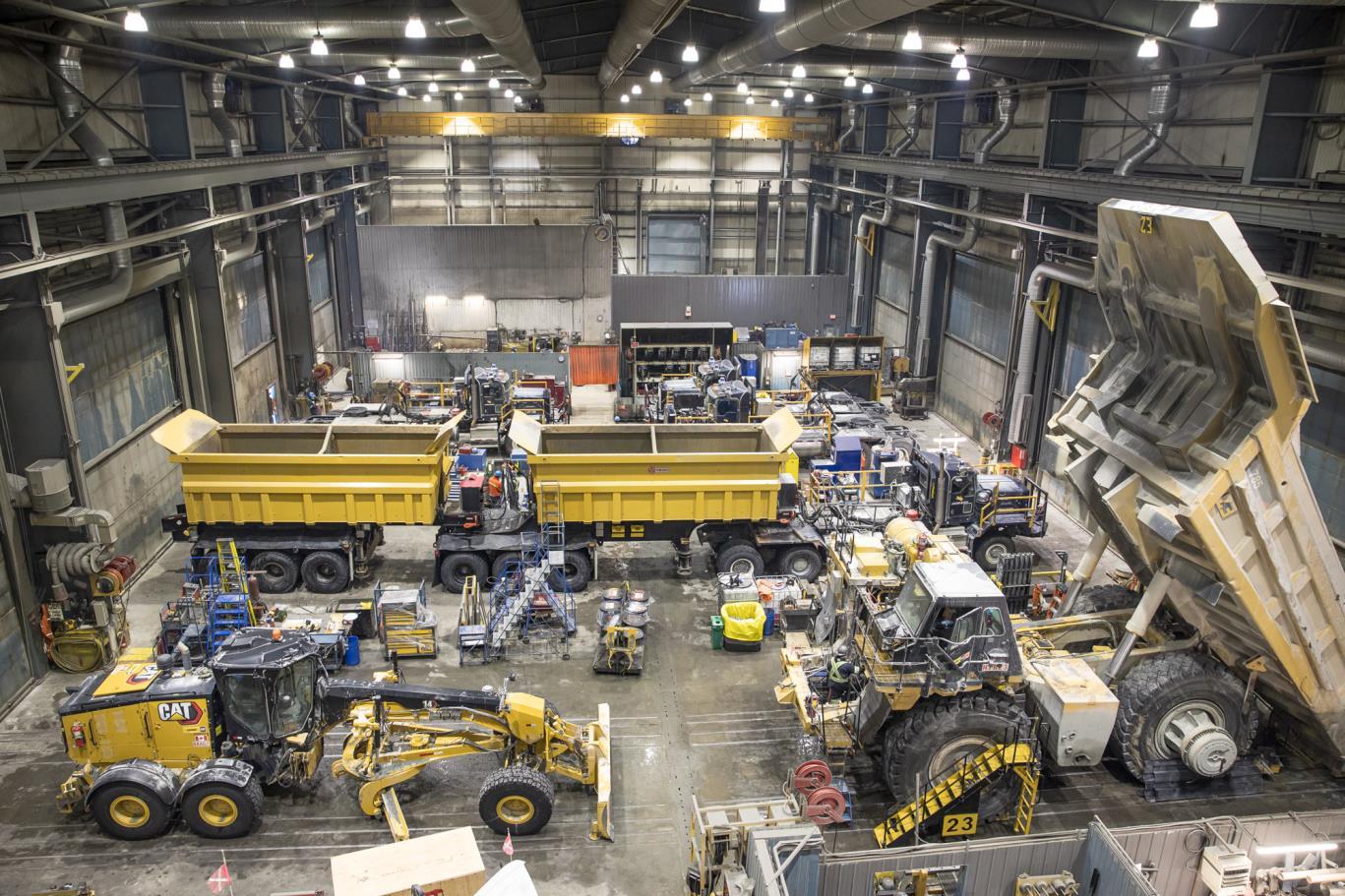

Rick Derkach has over 27 years of experience enhancing operational excellence in asset management across various sectors, including mining, oil & gas, marine transport, and manufacturing. He is part of Agnico Eagle Mining Ltd's Asset Management group, dedicated to advancing learning and transformative change Along with the Agnico team, Rick strives to build a maintenance and reliability culture, fostering autonomy, mastery, and purpose An active member of PEMAC, he is a Certified Asset Management Assessor and advocates for asset management practices both in Canada and abroad.
GFMAM Publishes the Initial Results of the Asset Management Survey
The Global Forum on Maintenance and Asset Management (GFMAM) has released the preliminary findings of its extensive survey on the current state of Asset Management worldwide. Conducted during the fourth quarter of 2023, this initial survey tapped into GFMAM’s broad and diverse network of member societies, drawing participation from experts across the globe
This foundational survey, which ran from September 2023 to January 2024, garnered 776 complete responses from professionals in 144 different countries. Its results offer a crucial snapshot of the trends, practices, and maturity levels of Asset Management in various regions around the world. These insights are summarized in a detailed report, now available on the GFMAM website.
The report is not just a collection of data but serves as a benchmark for the Asset Management community.
It establishes a baseline from which future surveys will build upon. The GFMAM aims to delve deeper in subsequent studies, seeking more granular insights to better understand the evolving dynamics and challenges within the Asset Management sector.
For further details and to view the complete report, visit gfmam-survey.org. This resource is invaluable for professionals eager to stay ahead in the dynamic field of Asset Management, offering a comprehensive overview that sets the stage for future research and development within the industry.


Number of responses by region




Top: Nigel D’Souza and J.-P. Pascoli represent PEMAC at the face-to-face meeting of the GFMAM held in conjunction with the Marcon Conference in Knoxville, Tennessee.
Bottom: J.P Pascoli held a presentation during the conference.
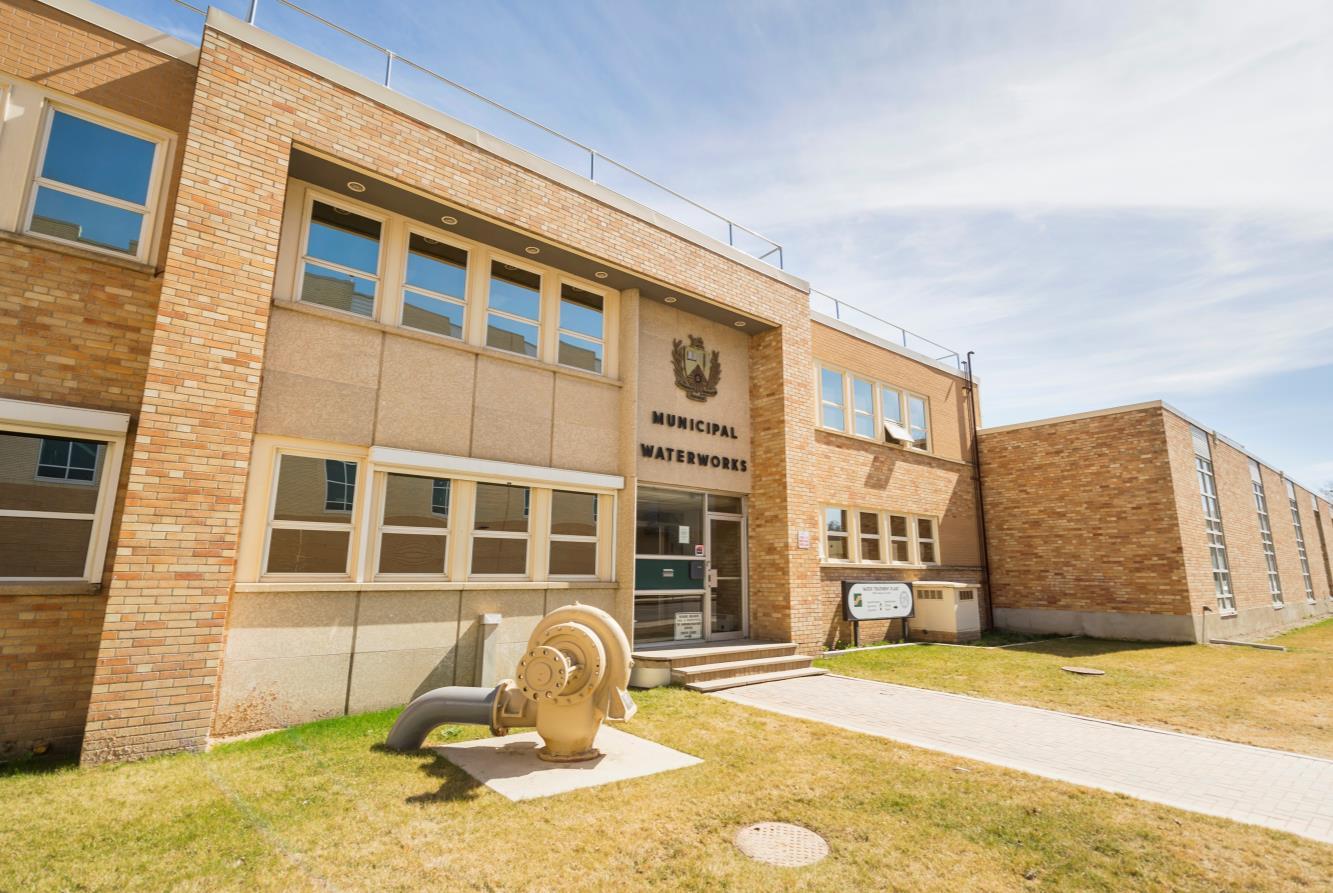
The City of Saskatoon is a public organization that must make informed and fiscally responsible decisions to ensure effective use of public funds and continued levels of service for its residents Currently, the Water Treatment Plant (WTP) generally falls within the lower spectrum of maintenance maturity with areas for growth and development to elevate its maintenance program.
Planning and scheduling are essential components of an effective maintenance program. It compromises two of the six steps of the maintenance workflow process (Figure 1).
Without planning and scheduling, 20 to 30 percent is typical for maintenance productivity.
Effective planning and scheduling can increase that to a reasonable target of 45%; world-class performance is often recognized as 55 percent.
The WTP does not have a maintenance planner. An initiative was proposed to create a maintenance planner position for a two-year trial period to improve the maintenance workflow management including planning and scheduling.
A planner and effective workflow management will ensure:
• the right work is carried out on the right assets, using the right resources;
• that people have the right skills, the correct procedures, the right tools and support equipment, and the right parts available;
• the work is completed within an appropriate time frame and the duration of work is the minimum required;
• production impacts are minimized; and
• the work information is documented and available for future reference.
In 2021, EAM SAP was implemented in the organization which further highlighted the gaps in the maintenance group. The organization has identified opportunities for continuous improvement with the maintenance workflow management (planning and scheduling) and data management to increase effectiveness of decision making and utilization of resources.

The current productive time for WTP maintenance is estimated at 30% (Figure 2); it is expected with a maintenance planner and effective workflow management productivity will increase to 45%. Utilizing an existing technician as maintenance planner results in a productivity gain of approximately $164,000 without increasing the existing work force whereas increasing the existing work force with a maintenance planner results in an estimated productivity gain of $197,000 Other expected savings are supervisor productivity recovery, safety, asset reliability, downtime reduction, and inventory management.
With the estimated costs associated with the initiative, the Net Present Value (NPV) is >$185,000 with a payback period of less than one year. When presented to senior management, it did not require much persuasion. The benefits were immediately recognized as well as an opportunity for the plant to increase its maturity; the maintenance planner initiative was approved.
To date, existing maintenance workflow processes and procedures are being reviewed and gaps are being highlighted that require further development to ensure there is a framework in place for a maintenance planner
and effective planning and scheduling. Furthermore, staff engagement is underway and ongoing to facilitate and manage the change and transition smoothly; change management and communication are integral for the initiative to be successful.
The maintenance planner job description including compensation was approved in consultation with stakeholders including senior management and Human Resources.
Recruitment proceeded in 2024 with an anticipated start date in spring.
As the maintenance planner position is new to the plant, there will be a period of adjustments and fine-tuning. However, as this is a trial this is to be expected, with the end goal of demonstrating and realizing the value of the position and potentially becoming a permanent role within the maintenance group. The improved workflow and data management will result in effective use of resources and responsible decision making. The initiative will improve the maintenance maturity of the plant and continuously improve the maintenance group in alignment with the organizational strategic goals of the City of Saskatoon


Brian is the Maintenance Manager of the City of
Plant with 10 years’ experience in the water industry; 5 years in maintenance at the plant. He has previously worked for the provincial water utility SaskWater and engineering consulting firm Wood. Brian obtained his B.Sc. and M.Sc. in Civil Engineering from the University of Saskatchewan and is a certified Maintenance Management Professional (MMP). Furthermore, he serves on the editorial committee of the Western Canada Water Magazine.
Figure 2: Maintenance Productivity EstimateIn 2018, the Federation of Canadian Municipalities (FCM) chose PEMAC to provide asset management training to municipalities across Canada. As a partner in the initiative that was offered through the Municipal Asset Management Program (MAMP), which was delivered by the Federation of Canadian Municipalities and funded by the Government of Canada, PEMAC delivered the Asset Management Professional (AMP) program to cohorts of cross-functional teams.
This initial delivery of the AMP program to municipal cohorts engaged 145 municipal practitioners across 52 municipalities as they advanced their asset management knowledge together and becoming CAMP certified.
PEMAC was selected by FCM to partner in MAMP again in 2020, as well as 2022, and continued to deliver the subsidized AMP program over 18-month periods in partnership with Northern Lakes College The last delivery that wrapped up in early 2024 marked the end of the FCM’s MAMP.
Over the last six years of this special subsidized delivery, more than 390 practitioners from over 112 different municipalities stretching across 12 provinces and territories have collaborated with others in their
organization through this learning journey. The teams have built skills to meaningfully improve Asset Management practices at their municipalities and are seeing the results of their efforts.
“PEMAC is honoured to have been an FCM partner during the Municipal Asset Management Program, making the AMP program accessible to practitioners across Canada who are now in a position to make better decisions with regards the full life-cycle management of municipal infrastructure,” remarks Cindy Snedden, Executive Director at PEMAC “Together we have expedited the progress in asset management awareness and practices for Canadian municipalities, and for the benefit of all Canadians.”


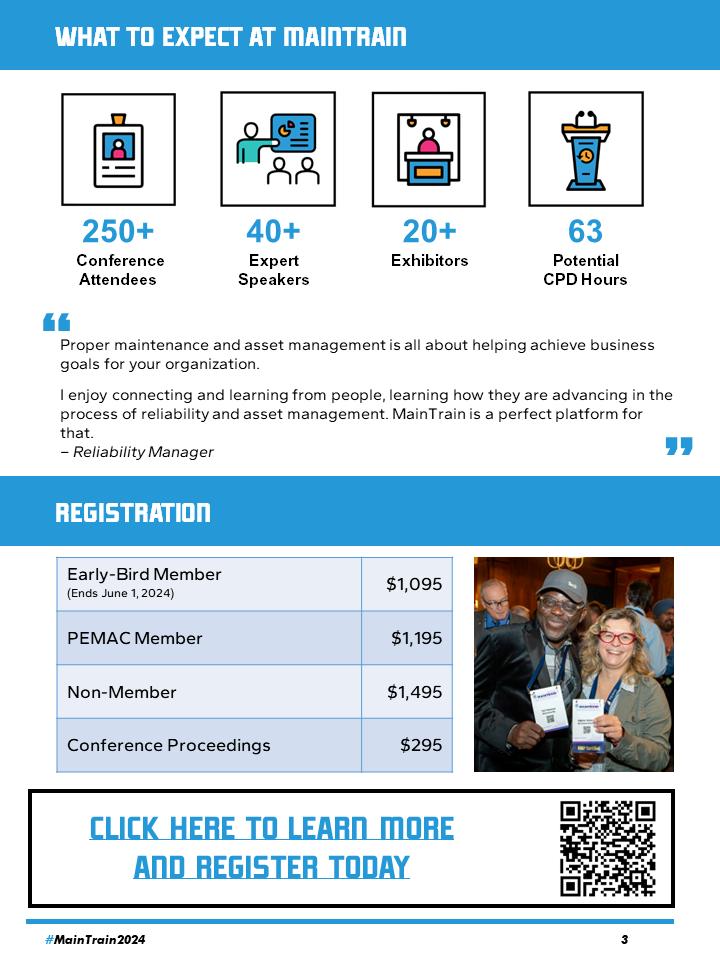
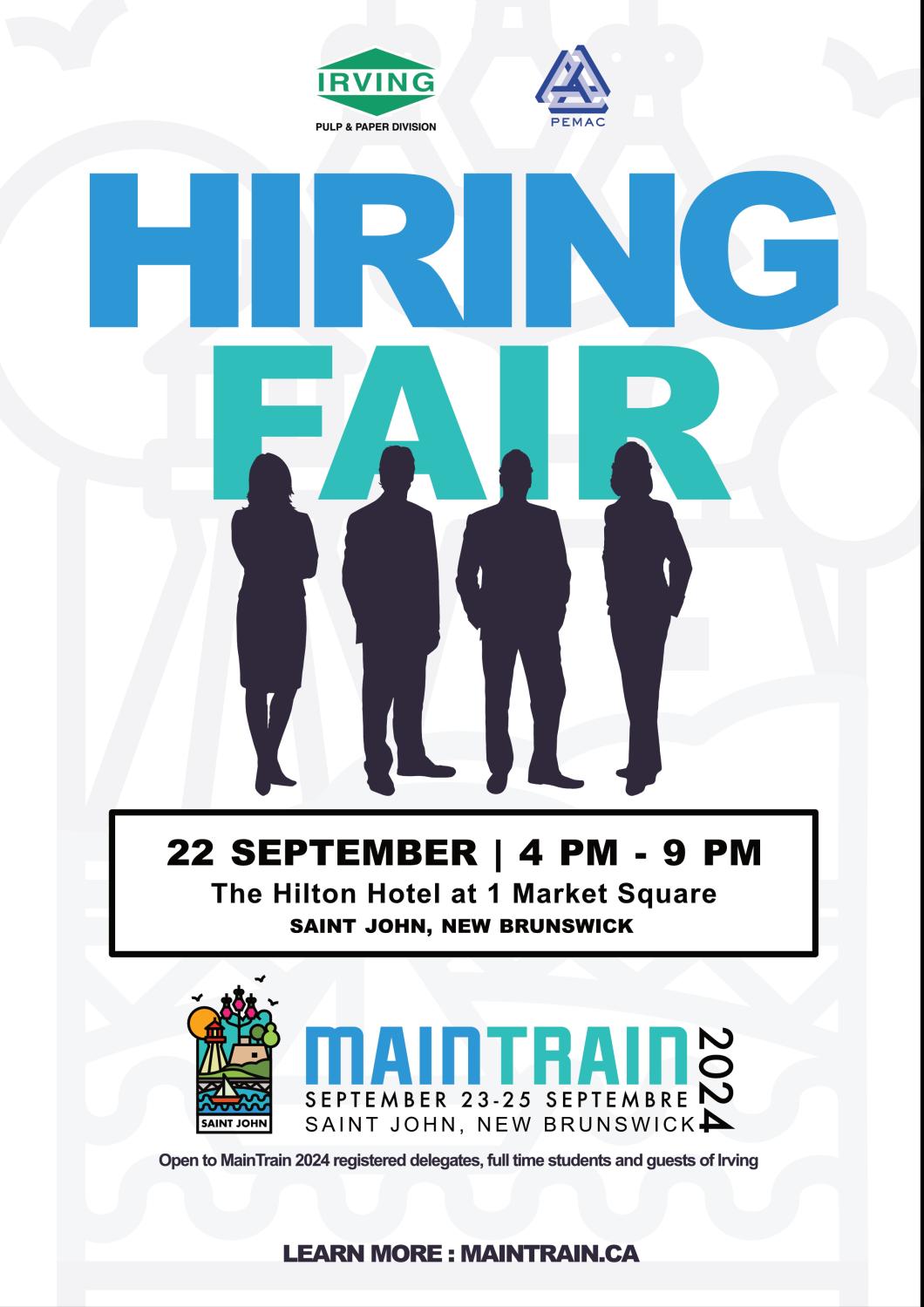


Embarking on a journey of professional development can be transformative, and my experience with Northern Lakes College has been nothing short of
extraordinary In this article, I will share my success story of taking a course at Northern Lakes College and applying the acquired knowledge to update and maintain my asset management plan in accordance with the ISO 55000 standards that were a key part of the teachings.
Several years ago, I found myself at a professional crossroads. My employer went from investigating the benefits of introducing a formal Asset Management methodology to making it a requirement
It began with the introduction of a new Asset Management Lifecycle Governance team at the corporate level. It evolved quickly to individual groups sprouting up to support the new asks I was tasked to stand up my division’s Asset Management group and ensure we were following standards outlined by the ISO standards and key policies outlined by our corporate ALM team
The interactive nature of the classes fostered a collaborative learning environment, allowing me to engage with classmates and gain diverse perspectives.
Understanding ISO 55000:
Writing the Asset Management Plan:
. Eager to advance in my career and enhance my skills, I began researching courses that aligned with these new goals Northern Lakes College stood out as a reputable institution known for its practical and industry-focused programs. After careful consideration, I enrolled in the Asset Management program, eager to delve into the intricacies of ISO 55000.
The courses at Northern Lakes College exceeded my expectations The curriculum was well-structured, blending theoretical concepts with real-world applications. The instructors were seasoned professionals who not only imparted knowledge but also shared valuable insights from their own experiences.
A significant highlight of the program was the in-depth exploration of ISO 55000 and its associated standards for asset management. The course provided a comprehensive overview of the standard, covering its principles, terminology, and the benefits of its implementation. I gained a profound understanding of how ISO 55000 could be a game-changer for organizations seeking to optimize their asset management practices.
Application in the Real World:
Armed with a solid theoretical foundation, I was eager to apply my knowledge in the professional arena. I secured a position where my role involved developing and maintaining an asset management plan for the organization. The goal was not only to comply with ISO standards but also to create a framework that would enhance the efficiency and sustainability of our asset management processes.
In this scenario, I was under a time restrictions and needed to produce the first iteration of our Asset Management Plan (AMP) before taking any courses. I applied basic information with guidance from key stakeholders on the corporate Asset Management Lifecycle (ALM) team. With their guidance and templates, I was able to produce the first version meeting fundamental requirements Having said that, there was still room for improvements and the document was always intended to be a green document and a work in progress.
One of the advantages of being able to produce a rough draft AMP first is the ability to cross reference and compare the teachings to the actual document helping to quickly identify shortcomings or new paths forward. The key learnings from the course allowed me to evolve the AMP to a more refined and concise document.
I began by conducting a thorough assessment of my division’s existing asset management plan and practices in comparison the new information I was presented with from the course.
Drawing on the principles outlined in the ISO 55000 standard and including the fundamental policies from the ALM team, I identified areas for improvement and developed a strategic roadmap for improvement and implementation.
One of the key aspects emphasized by ISO 55000 is the integration of asset management into the organization's overall business strategy I worked closely with cross-functional teams to ensure that our asset management objectives were aligned with the organization's broader goals.
This holistic approach not only enhanced the effectiveness of our asset management plan but also contributed to the overall success of the organization.
Asset Management emphasizes the importance of a continuous improvement mindset Applying this principle, I established a feedback loop to regularly evaluate the performance of our asset management plan. This involved gathering data, analyzing key performance indicators, and soliciting input from stakeholders.
Since I completed the course, I’ve been able to take my learnings and deliver dozens of key changes to not only improve the Asset Management Planning itself but also improve the outlining factors that contribute to the overarching foundation of asset management. A few key examples of what was delivered include:
• Showing asset to part relationships which ties back to when we dispose or decommission, we can help forecast overall cost of not only the key assets but their respective parts
• End-to-end lifecycle dashboard showing when assets are approaching end of life
• Displaying a 10-year forecast of asset spend based on lifecycle capture
• Applying a risk matrix to state of good repair outlook, helping us to prioritize SOGR spend
The continuous improvement process not only helped us identify and rectify inefficiencies but also fostered a culture of adaptability within the organization As a result, our asset management practices became more agile, enabling us to respond proactively to changing circumstances and evolving industry trends.
Implementing fundamental ISO principles in our asset management plan yielded tangible benefits for the organization. Improved reliability of assets, enhanced risk management, and optimized life cycle costs were among the positive outcomes. The organization's leadership recognized the value of the initiative, and the success of the asset management plan became a benchmark for other departments
One of the key aspects emphasized by ISO 55000 is the integration of asset management into the organization's overall business strategy. I worked closely with cross-functional teams to ensure that our asset management objectives were aligned with the organization's broader goals. “

My journey from enrolling in a course at Northern Lakes College to successfully implementing further ISO 55000 principles in a real-world setting has been a testament to the effectiveness of quality education and its practical application The knowledge and skills acquired during my time at the college have not only propelled my career forward but have also made a lasting impact on the efficiency and sustainability of the organization's asset management practices. The teachings provided the foundation, and ISO 55000 provided the framework for success. I’m able to confidently map out a formal asset management road map for growth and improvements aligning to our corporate objectives

Ashvin Koarga is currently Senior Manager of Asset, Inventory and Order Management at Metrolinx based out of Toronto, Ontario. His role as manager is specific to the Presto branch of Metrolinx that deals with the fare transaction devices that customers engage with during their daily commutes around the GTHA (greater Toronto and Hamilton areas)
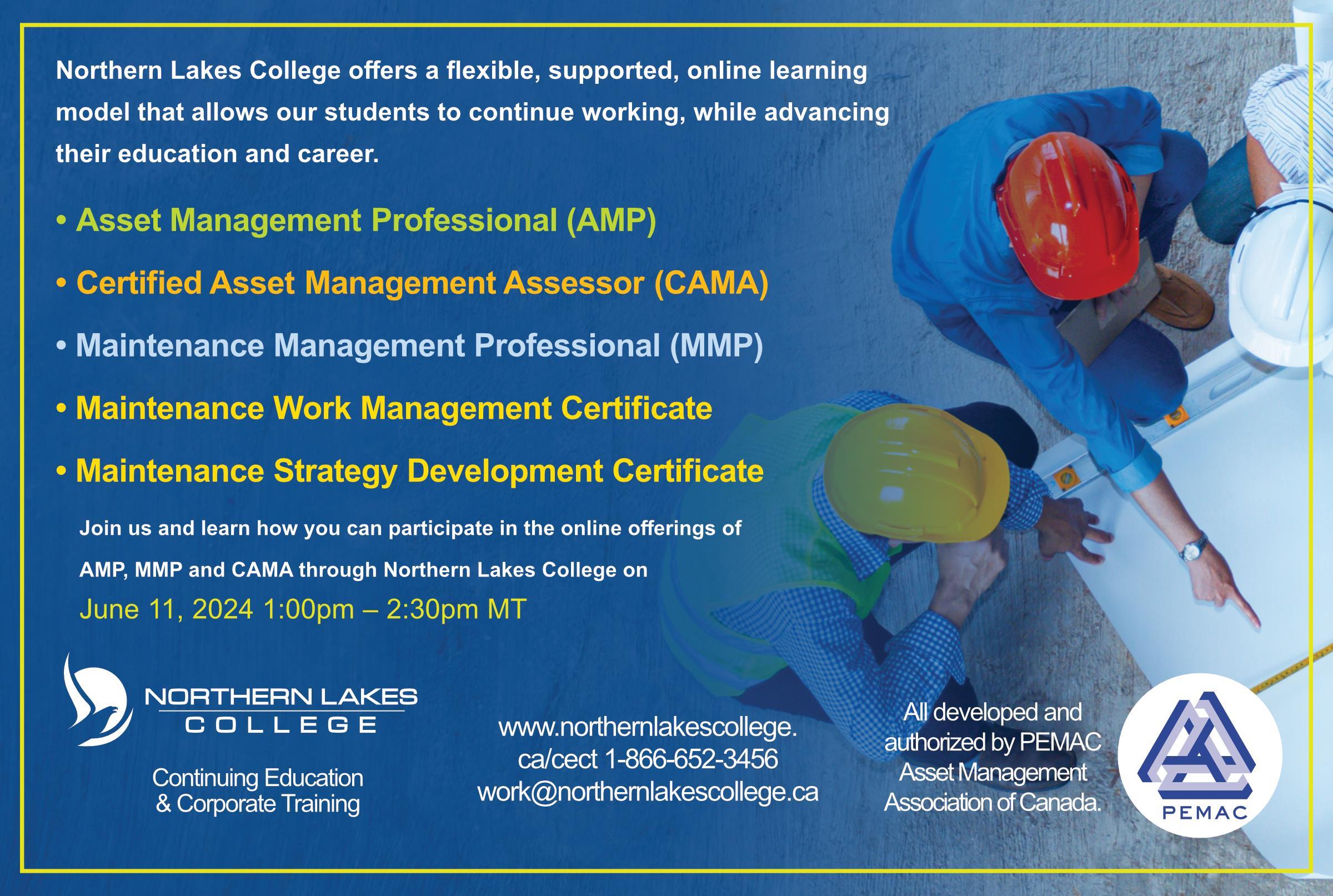
The balance of people, process, and technology is essential in maximizing the potential of condition-based or predictive technologies such as wireless sensors for equipment monitoring. By capitalizing on advanced capabilities, leveraging human expertise to interpret data, and implement workflows based on results, an organization can make informed decisions to maximize asset life at the lowest cost.
Condition monitoring or predictive maintenance actions can identify potential failures much sooner than using only human senses If processes are in place to respond to faults starting at an early stage, the benefits could include:
• Reducing reactive maintenance costs: Using planning and scheduling practices upon early detection will enable a repair to be performed at the right time, with the right resources Overtime calls and cost are reduced.
• Reducing the likelihood of unexpected failures: Early indication of faults enables organizations to plan parts, labour, contractors, and safety plans.
• Decrease repair and overhaul time: Collateral damage from an undetected fault is a common source of scope creep or found work during repairs. Additionally, conditionmonitoring is used to respond to faults detected, versus a time-based overhaul regardless of asset condition
• Increasing machinery mean time between failure: Aligning asset failure mode to maintenance activity, including condition monitoring, ensures the most appropriate failure management strategy Using a condition-based approach versus time-based repairs is shown to increase mean time between failures.
It is important to understand when condition monitoring is a suitable maintenance activity as well as the pros and cons of potential technologies
A system criticality analysis, followed by an asset maintenance strategy, should be performed to understand the consequences of failure, the ways in which the assets could fail, and the most suitable actions to take to manage the failure events.
Should condition monitoring be identified as an effective tool for an asset strategy, there are three typical ways condition-based data is collected: route based with a handheld, wired, or wireless The most appropriate data collection techniques can depend on asset criticality, asset location (i e , in a location difficult to access), skillset of the workforce, resource availability to perform and analyze data, operating cost to sustain the program (e.g., equipment rentals, the use of contractors).
Vibration (x-y-x direction)
Ultrasonics
Temperature
Pump
Rotational Speed
The following case study demonstrates the potential benefits of a wireless condition-based data collection technique, combined with Artificial Intelligence (AI) analytics. A wastewater pumping station was interested in demonstrating wireless technology to monitor and predict the condition of pumps at their station. The wireless device included a combination of sensors, as outlined in the table below.
With the combination of these sensor types and an analytics engine, the wireless device can detect early indications of a variety of faults. The number of sensors also increases the confidence in the detected fault and lowers the potential for false positives.
Vibration monitoring is a proven technology for the monitoring of rotating equipment. Vibration analysis can detect the early onset of a variety of faults, including misalignment, unbalance, cavitation, bearing failure and gear damage.
Ultrasonicmonitoringisusedto detectdiscontinuitiesordefectswithina component.This involvespassingacousticenergythroughit. Ultrasoundcan detectissuessuchaspooroil quality, roller-bearing wear and electric arching.
Temperature monitoring is used to detect potential failures that cause a rise in temperatures of the equipment or components themselves. Temperatures sensors can be used for electrical and rotating equipment.
Measuring speed gives an understanding of the degree to which equipment operates at historical best speeds. Any unexpected variance from the normal operating range is a way to detect early failure.
With the combination of these sensor types and an analytics engine, the wireless device can detect early indications of a variety of faults. The number of sensors also increases the confidence in the detected fault and lowers the potential for false positives.
As part of a comprehensive capital needs assessment, eight (8) sensors were commissioned to facilitate predictive online monitoring at a wastewater pumping station, which consisted of four (4) pumps These wireless sensors incorporate vibration, ultrasonic, temperature, and speed sensors, and leverage Artificial Intelligence (AI)-driven analytics to detect faults and prompt proactive action when anomalies are identified (See Figure 1).
Notifications were received from the wireless sensors deployed on two of the sewage lift pumps at the station. Substantial increases to their normal vibration levels were detected. The AI-based diagnostics indicated a potential coupling issue, misalignment, or soft foot on the pump An automatic email was issued The issue was flagged as “urgent” with a projected remaining life of 13%.
Operations personnel went to the site and found that the VFDs for both pumps had been bypassed due to a common failure and the pumps were running at full speed System demand did not require both pumps to be running at full speed. Reviewing the wireless system dashboard confirmed that asset sensor levels, especially vibration, were restored to acceptable levels once personnel corrected the VFD issue. If the sensors had not been installed, it was possible that the pumps would have run at full speed without required demand for a period of time and failures may have occurred
The early indication from the wireless sensors and prompt action by operations personnel prevented early failure of two pumps and significant unplanned outage and repair.
Comparing the total cost of the wireless sensors (<$7,500) to the estimated cost of a major pump overhaul (>$50K), the return on investment was self-evident.
 Figure 1: Wireless sensors on sewage lift pumps (orange devices)
Photo Credit: Andrew Kretz, GM Blue Plan
Figure 1: Wireless sensors on sewage lift pumps (orange devices)
Photo Credit: Andrew Kretz, GM Blue Plan
As part of this same capital needs assessment, a Preventive Maintenance Optimization (PMO) was conducted. The main objective of a PMO is to ensure that current practices manage the consequence of asset failure in the most cost-effective manner. An assessment of current pump PMO practices was undertaken, including a typical two-hour pump PMO task. It was found that using the wireless sensors to understand and respond to identified faults would eliminate or significantly reduce the scope of the current time-based two-hour pump PMO This exemplifies the additional return on investment: Using condition- monitoring to shift fixed labour resources from time-based PMO tasks to other actions that add more value, such as maintenance backlog.
There were several benefits identified to the organization during this project at the station Firstly, it was found that the wireless sensors with AI-based analytics were easy to deploy and increased asset availability through early detection of potential pump faults and potential actions. Secondly, the wireless sensors were able to prevent a potential highcost pump repair through the prompt action by Operations Thirdly, by identifying condition monitoring as a cost-effective strategy to manage pump failure modes, resources could be reallocated to other value-added tasks, such as addressing maintenance backlog. The organization can achieve a sustained level of service at optimized costs by incorporating condition-based maintenance in their asset strategies

Andrew is an Environmental Scientist by trade, with over 6 years of professional experience in the water, wastewater and asset management space His educational background is in Environmental Science, Business Administration as well as Environmental Management and Assessment.
Andrew is a certified treatment operator with a Level 1 certification in Water Treatment/Distribution and an OIT in Wastewater Treatment/Collection. He is Environmental Professional through ECO Canada specializing in Water Quality, a Certified Technician through OACETT, and a practicing member of PEMAC. His recent endeavors have been primarily centered on vertical and linear water and wastewater infrastructure, encompassing comprehensive assessments of facility capital requirements and conditions. Additionally, he has been instrumental in devising asset criticality and risk frameworks, formulating robust operations and maintenance manuals, and refining preventative maintenance plans and programs for optimal efficiency and sustainability

The balance of people, process, and technology is essential in maximizing the potential of condition-based or predictive technologies such as wireless sensors for equipment monitoring.

This guest article was provided by the Canadian Network of Asset Managers (CNAM)
As municipalities and public sector organizations across Canada head into spring, all of them are readying for the change in weather and intensive maintenance and capital projects, including roads and bridges, underground utilities, vertical infrastructure, parks and recreational facilities, to get underway Although the work is mostly the same as it was in previous years, all public sector organizations are being asked to do more with less.
Staffing levels are being scrutinized, and funding levels struggle to be increased in the face of inflation and affordability affecting residents and the employment sector.
Staff working for municipalities are dealing with the infrastructure gap, levels of service and finding the right balance to be a sustainable community Other public sector organizations are striving to meet regulatory requirements and increasing capacity demands in the face of aging infrastructure.
These are the same challenges staff with municipalities and public sector organizations have been discussing with elected officials for years. The good news! There are some positive trends happening with municipalities which support the work of asset managers.
Data driven decision making and similarly evidence-based decision making, approaches common to the field of information technology, are now being utilized in the asset management profession to manage an organization’s natural and built assets.
Asset managers go beyond a basic data level, layering in risks to service, risk of failure, criticality, both in terms of impact to customers immediately and impact to capital and life cycle costs and subsequently mill rates, consumption rates, and other fees and charges. Ultimately, leveraging this data, evidence and risks comes down to presenting the data in terms of the information it provides and storytelling. What did the data tell us? What evidence do we have to make this decision? What are the long-term impacts of making this decision? Turning data and evidence into meaningful information is ultimately the key
To support the storytelling is a burgeoning wealth of tools to collect data and present information. Depending on the field of practice, these choices have incrementally or significantly advanced in a short time, offering “the art of the possible” to an organization’s toolbox
The average staff person within these organizations is already leveraging technology, such as their mobile phones for information gathering at some level, including an image of the condition of an asset, or taking a measurement of a deficiency So much more, however, has become available Standard or custom application development for data collection, leveraging a mobile device’s accelerometer, using the standard or enhanced geolocation capabilities of a mobile device are just a few technological data collection tools that support a trend to get more information and leverage it The availability of data tools continues with aerial and terrestrial lidar, smart meters, unmanned arial vehicles (i.e. drones), remote sensing, computer vision, robotic pipe inspections, sensors arrays and more. Leveraging technology to gather information is a trend that will continue to grow, improve, and become more accessible over time as the Making sense of the data being collected and turning it into meaningful information is the companion with software applications that can store, tabulate, display, predict and generate scenarios. Adding to the mix is the emergence of artificial intelligence assisted applications.
The choices and available solutions can be overwhelming and implementation perhaps daunting. With any change, there are no right and wrong answers, only pros and cons. A technological solution may be faster or cost less, but perhaps at the expense of a tangible or intangible benefit
Last but certainly not least, is the opportunity to share information and experiences, whether successes or missteps. It was not that long ago when an organization was about to embark on something new, it might look down the road and ask its closest neighbour about their experience trying the same or a similar endeavour. Now, through platforms such as Zoom, Teams, Google Meet can connect and get insights from staff within similar organizations across the country, and around the world (if you are willing to get up early or stay late to make a call to someone on the other side of the planet ) This is where organizations like the Canadian Network of Asset Managers (CNAM) and PEMAC Asset Management Association of Canada (PEMAC) truly embrace and support bringing people together with similar interests to learn from one another and share their experiences and knowledge.
Such knowledge transfer could involve a discussion on a foundational aspect of asset management, such as a municipality’s plan to manage its assets, how to identify owned assets or implement a technology tool CNAM and PEMAC, like technology, can be the right tools for the task at hand, as their members, like staff within a public sector entity, are comprised of people who like to share their experiences and talk shop about asset management challenges and successes.
Depending on the organization size, either big, medium or small, and no matter what the challenge, there is likely a peer in a similar organization who has faced it before. Unlike trends in the fashion industry, these trends are not likely to fade away with those bellbottom jeans you’ve been holding on to for the day the trend cycles back. Data driven decision making, through the use of technology and the ability to converse with your peers will only grow and improve. So be bold, be brave, connect with your closest digital neighbour in Campbell River, British Columbia to St John’s, Newfoundland and Labrador. Technology makes it simpler to do so, and organizations like CNAM and PEMAC create forums and events to make the introductions and get staff talking about effective asset management

Geoff manages Corporate Asset Management for the City of Regina, focusing on asset planning, policy, and community development since 2009.
For 10 years, he was involved in engineering design and review of development proposals, engineering standards review and development, off-site levy policy and rate setting, stakeholder relations, management and leadership In the last couple years, his team undertook and delivered a organization wide State of Infrastructure Report, had an Asset Management Policy approved and initiated planning for an Asset Registry. Prior working for the City, Geoff worked in various capacities for a water treatment manufacturer including the representation on a CSA Standard committee. He has a Bachelor’s Degree in Science in Mechnical Engineering from the University of Saskatchewan and is a Professional Engineer with the Association of Professional Engineers and Geoscientists of Saskatchewan He has been a board member with CNAM for the past two years and has been involved with and chaired the Education, Research and Training Committee for CNAM

The issue of PEMAC Now has been stewarded by the PEMAC Editorial Board This team has set an objective to increase the number of PEMAC members who contribute editorial content to PEMAC Now and other external publications If you are interested in opportunities to contribute please submit your expression of interest to editor@pemac org The Editorial Team would like to thank our advertisers and everyone that contributed, making this issue of PEMAC Now possible See you next time

